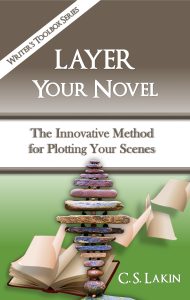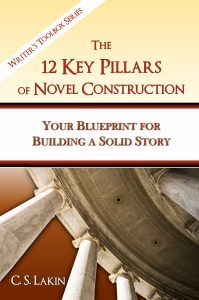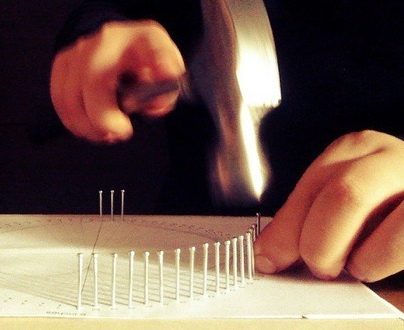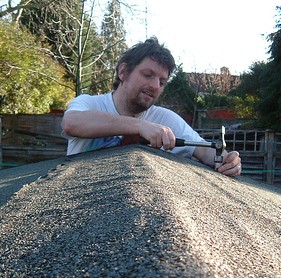How You Can Avoid Making Structural Mistakes in Your Novel
I’ve spent more than three decades writing novels. And at first I had no clue what I was doing.
Like many people, I think it would be a cinch to write a novel. I read voraciously, so why wouldn’t I just intuitively know how to construct a novel?
This is what a whole lot of people think. But perhaps you know the truth by now: writing a terrific novel is complex, like building a house. You have to have the “big picture” in mind the while time you are plotting and writing. And that’s like spinning a dozen plates at one time.
It’s doable, but it does take practice.
So after spending three decades dropping a lot of plates, I spent a ton of time tearing the novel-writing process apart. During those years I attended plenty of writing conferences and retreats and workshops. I read lots of books on the craft, and when the Internet became part of daily life, I started reading blog posts and listening to podcasts and doing all I could to get novel construction under my belt.
Did I make a lot of mistakes? Heck yeah.
I spent years doing things wrong. I didn’t get scene structure—or novel structure, for that matter. Mostly because I didn’t get that there were some basic rules or principles to structure.
I hated the thought of following a formula. I didn’t want to write like everyone else. I wanted to be unique.
And if you get only one thing from today’s post, make it this:
Using time-tested structure doesn’t mean you are being formulaic. It doesn’t mean crafting a cookie-cutter novel.
It wasn’t until I accepted the simple truth that structure is the key to a great novel that I finally wrote great novels.
When I say great, I’m talking about novels that hold together. That meet reader expectations. And I’ve seen countless writers go from crafting train wrecks to best sellers by applying the rules of structure.
My aim—in teaching writing craft and starting my blog—was to help writers NOT make the same mistakes I made. Not waste years struggling to figure this “novel-writing stuff” out.
I wanted to come up with THE consummate, most clear and simple and comprehensive book on novel structure possible. And so I put together The 12 Key Pillars of Novel Construction.
 This book isn’t about pinch and plot points and which scenes need to be where. I’ve been covering a lot of that on my blog, and Layer Your Novel, a new book in The Writer’s Toolbox Series, will be forthcoming on that.
This book isn’t about pinch and plot points and which scenes need to be where. I’ve been covering a lot of that on my blog, and Layer Your Novel, a new book in The Writer’s Toolbox Series, will be forthcoming on that.
But more important than knowing where to put your second pinch point is to understand how to build the framework for your story.
I’d like to get you thinking about that this week: building a framework.
Why?
Because a whole lot of novels have elements (or pillars, you could say) that are so weak, they just can’t hold up the story. Their concept is flat and boring. Their protagonist is weak and directionless. They have little to no conflict and almost nothing at stake. There is no theme at the heart of their story.
If any of the key pillars is missing, a building will collapse. Same with story.
When thinking hard about creating an approach to novel writing that would be the easiest, most intuitive, and logical—so that any writer could master the difficult craft of novel writing—I came up with 12 key pillars.
While there are plenty of other minor elements or concerns when it comes to writing a novel, to help writers best, I decided to create a clear structural system that looks at the 12 foundational pillars that support a novel.
Novel writing is a unique type of animal. Different from short stories or screenplays or plays or poems. There is an expected, accepted structure. And while some novels don’t follow this structure and still get rave reviews and have lots of happy fans, it’s very hard to pull off a great novel if the key “pillars” are ignored.
If you’re a pantser or have been bucking structure, try to open your mind a bit. At least give this a try. I have never seen anyone who’s worked to make these pillars strong come out with a worse novel than what they started with.
In other words, you can only benefit by applying these concepts. By building these pillars.
Give it a spin. If you don’t like this approach, dump it. But I believe with all my heart that if you approach constructing your novel by building the four corner pillars first, then adding in the eight supporting pillars next, you will see how much easier this whole novel-writing thing is.
What are the four pillars?
- Concept with a Kicker
- Protagonist with a Goal
- Conflict with High Stakes
- Theme with a Heart
Just start with those.
And because I’m so passionate about this, I even created an online video course with hours of instruction, along with detailed handouts (worksheets-checklists) so you can really nail this. In fact, I’m offering you here a discount, so you only pay $29 to take this video course and master your corner pillars! Click HERE to sign up!
 I’ll get into some of these key points in the next posts, but in the meantime, pick up your copy of The 12 Key Pillars of Novel Construction here on Amazon, in print or as an ebook. This is going to be one of your most treasured and useful resources.
I’ll get into some of these key points in the next posts, but in the meantime, pick up your copy of The 12 Key Pillars of Novel Construction here on Amazon, in print or as an ebook. This is going to be one of your most treasured and useful resources.
Start thinking about the framework of your story. Are you sure it will hold up?
Don’t guess at this. This book will help you check all twelve pillars to ensure you have that solid structure in place. Study the chapters and use the checklists to see if you nailed your pillars.
Have you dug into the book? Which pillar do your struggle the most with, and how has this book helped you make your pillar stronger?











